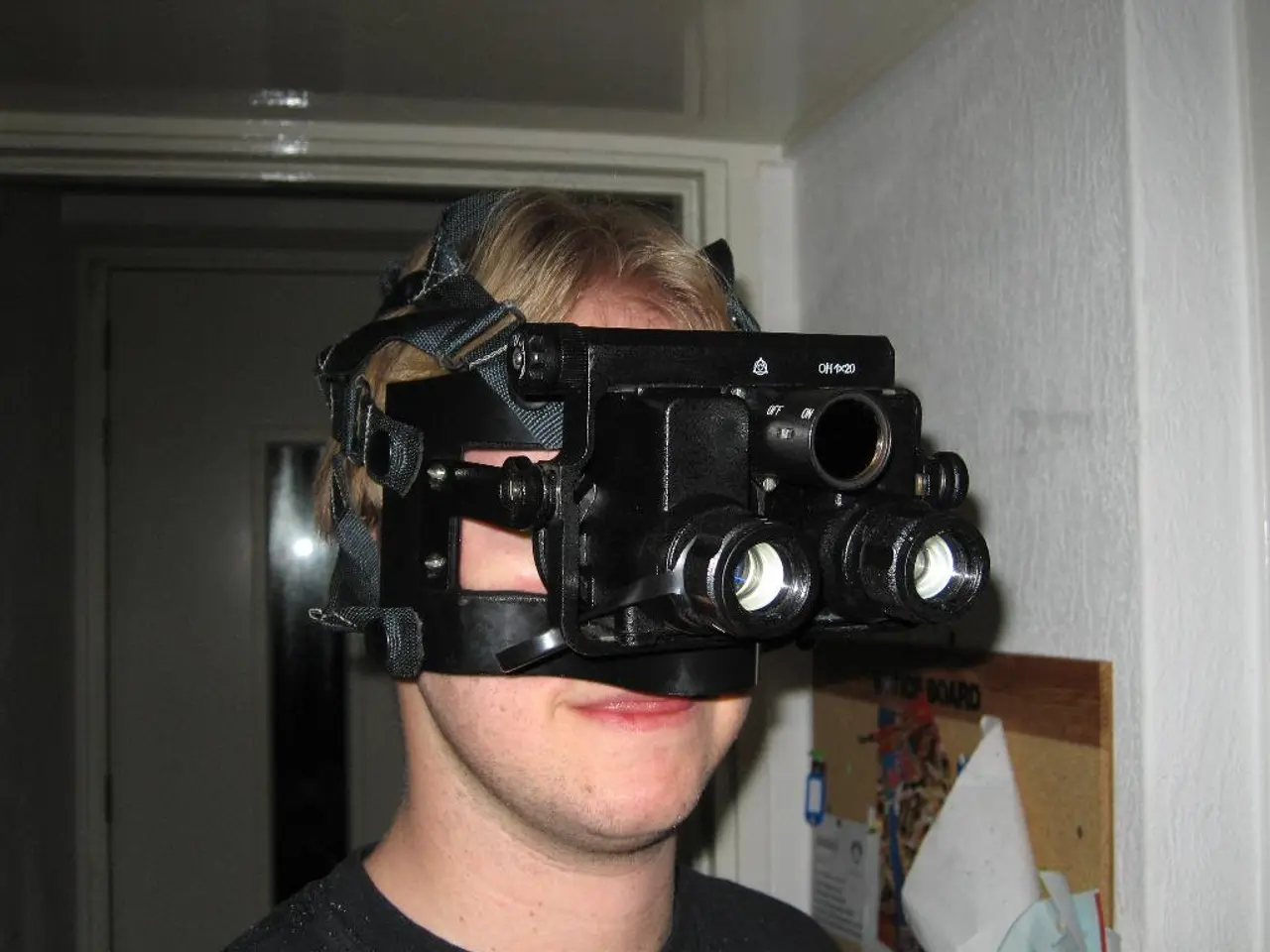Virtual and Augmented Reality (VR and AR) Applications in E-Commerce and Retail Industry 2024
In the ever-evolving world of retail, Virtual Reality (VR) and Augmented Reality (AR) are making significant strides, revolutionizing the way customers shop online. These cutting-edge technologies are enhancing product visualization, personalization, and customer engagement, leading to increased sales and reduced returns.
Current Applications and Impact
One of the most notable applications of AR is virtual try-ons. Companies like Sephora and Warby Parker are leveraging AR to enable customers to visualize makeup, eyewear, and even furniture in real-time before making a purchase. This innovative feature reduces product returns and increases customer satisfaction and loyalty. For instance, Warby Parker uses AI and AR to offer virtual try-ons with dynamic 3D mapping for a realistic fitting [1][2].
VR, on the other hand, creates immersive 3D store environments, allowing shoppers to explore products from all angles remotely, replicating an in-store browsing experience without leaving home [1]. IKEA, for example, has launched a VR app that lets customers walk through virtual showrooms and see how furniture would look in their own homes.
AR shopping assistants, powered by AI, guide customers with product recommendations, answer questions, and offer styling advice, enriching the shopping journey and providing personalized support without the need for in-person sales staff [1]. Google's Virtual Try-On integrates AR directly into search results, boosting engagement and significantly increasing purchase intent [3].
Future Potential
The global market for virtual try-ons is expected to grow from $10.93 billion in 2024 to about $108.5 billion by 2034, reflecting increasingly widespread adoption across various product categories beyond apparel [5]. Future developments aim to combine AR/VR with AI to create more interactive workspaces, enhanced image recognition, hyper-personalized product recommendations, and predictive sizing, improving fit accuracy and shopping experience [4][5].
There is a rising trend in using AR avatars and virtual influencers for marketing, store navigation, and customer engagement, offering new interactive dimensions in retail experiences [4]. Cloud-based, scalable subscription platforms dominate the virtual try-on market, facilitating fast deployment in retail ecosystems, with growing emphasis on data monetization and personalization [5].
Challenges
Despite the promising future, there are challenges to overcome. Developing high-quality AR/VR content and infrastructure, including accurate 3D mapping, real-time rendering, and seamless integration with existing e-commerce platforms, remains complex and costly [6].
Broad consumer adoption depends on access to compatible devices (like AR-enabled smartphones or VR headsets) and user comfort with these technologies. While engagement is strong among tech-savvy users, the market is yet to reach its full potential [6].
The collection of biometric and behavioral data required for virtual try-ons and AI assistants raises privacy concerns that retailers must address with robust safeguards [6].
Conclusion
VR and AR are already transforming e-commerce by providing virtual experiences that simulate real-world interactions, enhancing product visualization, and personalizing the shopping journey. Retailers investing in these technologies can expect improved customer engagement and higher conversion rates, but must navigate challenges including costs, technology adoption, and data privacy [1][2][3][4][5].
With the adoption of 5G technology and the continued advancement of AI, the future of VR and AR in e-commerce is bright, promising a world where retailers can reach a global audience without the need for physical stores, offering immersive, personalized shopping experiences that replicate the social aspects of shopping in a physical store.
References:
[1] The Verge. (2021, March 18). The future of retail is virtual. Retrieved from https://www.theverge.com/2021/3/18/22332823/virtual-reality-ar-retail-shopping-experience-future
[2] Warby Parker. (n.d.). Try on glasses at home. Retrieved from https://www.warbyparker.com/try-on
[3] Google. (n.d.). Google virtual try-on. Retrieved from https://www.google.com/virtualtryon/
[4] Proven Reality. (n.d.). About us. Retrieved from https://provenreality.com/about-us/
[5] MarketsandMarkets. (2021, May 17). Virtual try-on market size to grow from USD 10.9 billion in 2024 to USD 108.5 billion by 2034, at a CAGR of 25.8% [Press release]. Retrieved from https://www.marketsandmarkets.com/PressReleases/virtual-try-on.asp
[6] TechCrunch. (2021, June 29). The challenges and opportunities of AR shopping. Retrieved from https://techcrunch.com/2021/06/29/the-challenges-and-opportunities-of-ar-shopping/
- The growing adoption of custom solutions like virtual try-ons and AI shopping assistants in healthcare and lifestyle sectors aims to revolutionize the way we interact with products, improving personalization and customer engagement.
- Retail companies in the education-and-self-development industry are exploring the potential of AR and VR technology to create immersive learning environments, offering a more engaging and interactive educational experience.
- The future of entertainment may lie in the integration of AR and VR for more immersive and interactive experiences, blurring the lines between gaming and reality.
- Finance institutions are looking into using AR/VR technology to visualize investment options, enabling customers to make educated financial decisions with greater clarity.
- An increase in the use of AR avatars and virtual influencers for marketing purposes could lead to more targeted and personalized advertising campaigns, as well as innovative methods for store navigation and customer engagement.
- The global market for virtual education and self-development, including AR/VR content, is expected to grow significantly as more companies invest in technology to create custom learning experiences.
- Implementing AR and VR technologies in the general-news sector could lead to more immersive and interactive ways for consumers to stay informed about global events, sports, and current affairs.
- To develop and maintain high-quality AR and VR content, we need to invest in technology upgrades, including better hardware, software, and artificial intelligence algorithms that can deliver seamless, real-time experiences.
- Addressing privacy concerns and ensuring the security of user data will be essential for widespread adoption of AR and VR technologies in various industries, ensuring the ethical use of biometric and behavioral information.




